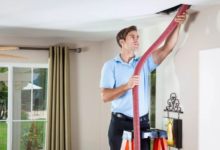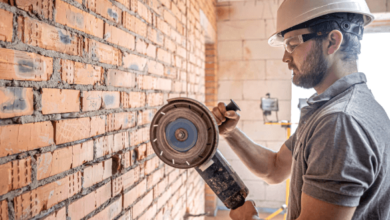Top 7 Mistakes DIY Movers Make (And the Equipment That Solves Them)

Moving to a new home by yourself can be exciting and budget-friendly. However, many DIY movers don’t realize how challenging the process can be without proper preparation and tools. Moving involves more than just packing boxes and loading a truck. There are many hidden difficulties, such as determining the appropriate timeline, safely lifting heavy furniture, and protecting your belongings from damage. Mistakes during any step can cause broken items, injuries, or wasted time and effort.
For example, rushing through packing or using the wrong equipment, like improperly moving boxes to move heavy items, can lead to costly problems. Fortunately, these issues are avoidable when you know the common mistakes and use the right moving gear to solve them. Being prepared with the proper tools, including sturdy moving boxes, and knowledge can make your DIY move easier and less stressful.
In this blog, we will explore why DIY moving can be tricky, the top seven costly mistakes DIY movers make, and the equipment that solves them.
Why DIY Moving Can Be Tricky?
Moving by yourself may seem like a cost-effective option, but it can be more challenging than expected. While the idea of packing up your home on your own may feel manageable at first, several challenges can quickly arise.
- Lack of Experience: Many DIY movers underestimate the amount of effort and expertise required to move heavy furniture, large appliances, and fragile items safely.
- Physical Strain: Lifting and carrying bulky items can lead to injuries if not done correctly. It’s easy to watch how physically demanding a move can be.
- Time-Consuming: Packing, loading, and unloading all take more time than expected, mainly when doing it alone.
- Risk of Damage: Without proper packing materials and techniques, items can be damaged, leading to costly replacements or repairs.
DIY moving can be rewarding, but it requires careful planning and the right equipment to make the process smoother and safer.
See also: The Ultimate Guide: Is a High-Pressure Opener Right for Your Home
Top 7 Costly Mistakes DIY Movers Make: Equipment and Their Solutions
- Not Properly Preparing Fragile Items
One costly mistake DIY movers often make is not preparing fragile items properly. These belongings can easily break or get damaged if they aren’t packed with care & the right materials. Fragile items need extra attention because they are sensitive to bumps and pressure during the move. Skimping on packing supplies or rushing the process increases the risk of damage.
To solve this problem, invest in quality packing materials like bubble wrap, packing paper, and sturdy boxes designed for fragile items. Wrapping each piece carefully and using dividers for glassware or ceramics adds layers of protection. Specialty boxes for mirrors or electronics provide additional security. Properly cushioning fragile items not only safeguards your belongings but also gives you peace of mind on moving day.
- Overloading Boxes
Overloading boxes is a common mistake that can cause them to break open or become too heavy to carry safely. When too many items are pushed into one box, it becomes bulky and increases the chances of damage both to the contents and to your back or hands during lifting. Overpacked boxes also make piling in the truck difficult and unsafe.
To solve this problem, spread your items across several boxes. This will help you balance the weight evenly. Use smaller boxes for heavy items like books. Use larger boxes for lighter, bulkier items like linens or pillows. Reinforce box bottoms with extra packing tape to avoid sudden slashes. Using proper-sized boxes and packing them carefully ensures they stay intact and are safer to handle.
- Improper Lifting Techniques
Improper lifting techniques are a significant cause of injuries and damaged furniture during a DIY move. Many movers strain their backs or muscles by lifting heavy items incorrectly or attempting to move bulky furniture alone. This mistake can lead to serious health issues and costly damage to belongings or your home.
To solve this problem, equip yourself with moving dollies, lifting straps, and furniture sliders. These tools reduce the strain on your body and allow safer handling of heavy or awkward items. Always lift with your legs, not your back, and ask for help when needed. Using the right equipment and proper techniques will protect both you and your belongings during the move.
Tip: For very heavy or large furniture, consider hiring professional movers who have the experience and equipment to handle tricky jobs safely.
- Neglecting to Label Boxes
Neglecting to label boxes is a common mistake that leads to confusion and wasted time on moving day and during unpacking. Without clear labels, you may struggle to find essential items or accidentally place boxes in the wrong rooms. This disorganization makes the entire process more stressful and inefficient.
To solve this hurdle, use permanent markers and color-coded labels to mark each box with its contents and the room it belongs to. Label boxes on multiple sides so they are easy to identify, no matter how they are stacked. Keeping an inventory list can also help you track where everything is. Proper labeling speeds up unloading and enables you to settle into your new home more quickly.
- Overloading the Moving Truck
Overloading the moving truck is a dangerous mistake that can cause your load to shift during transit, damaging your belongings and making driving unsafe. Packing the car without proper organization or securing heavy items can lead to accidents, scratches, and broken items. This mistake can also violate weight limits and potentially cause fines.
To solve this problem, use load bars, cargo straps, and moving blankets to secure your items tightly inside the truck. Distribute weight evenly across the truck bed, placing heavier items on the bottom and lighter boxes on top. These tools keep your load stable and protect fragile surfaces from scratches and dents. Taking the time to load correctly improves safety and protects your possessions.
- Underestimating Time and Energy
Underestimating the time and energy required for a move is a standard error that leads to rushed packing, fatigue, and mistakes. Many DIY movers start late or try to do too much alone, which results in exhaustion and increased chances of damage or injury. A poorly paced move also causes unnecessary stress.
To solve this issue, create a realistic moving schedule that breaks down tasks over several days or weeks. Use moving planner apps or checklists to organize each step and assign time for packing, loading, and breaks. Being natural about your limits and pacing yourself makes the move more manageable and less stressful.
- Not Protecting Floors and Walls
Failing to protect floors and walls during a move is a costly mistake that can result in scratches, dents, and stains in both your old and new homes. Dragging heavy furniture or boxes without proper protection damages surfaces, leading to expensive repairs or loss of deposits if renting.
To solve this hurdle, use floor protection films, corner guards, and furniture sliders during the move. Placing moving blankets under heavy items and taping protective films on floors and doorways prevents damage. Doorway ramps help with smoothly rolling dollies over thresholds. Taking these precautions preserves your home and keeps your move worry-free.
Final Thoughts
Moving on your own can be a rewarding experience, but it comes with its share of challenges that many DIY movers face. By understanding common mistakes, such as poor packing, improper lifting, and neglecting home protection, and by using the right equipment to address these issues, you can make your move smoother and less stressful. With careful preparation and the proper tools, you’ll protect your belongings, avoid injuries, and save time and effort. Keep in mind that a successful DIY move isn’t just about working hard; it’s about working smart.






